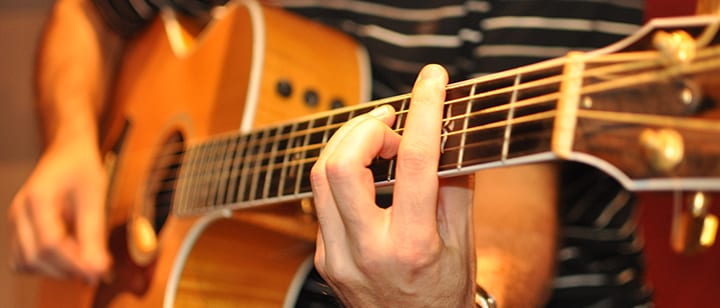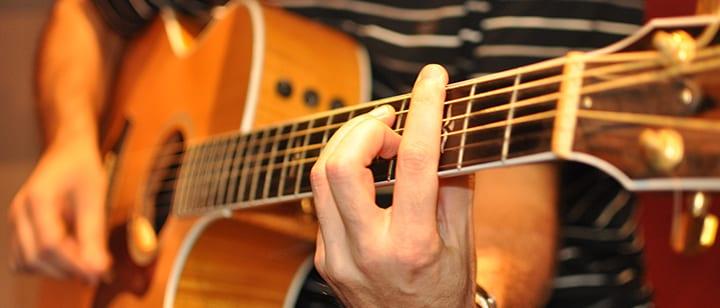 Ready to get started with learning blues chord progressions? Here’s an intro by Austin, TX guitar teacher Samuel B...
Ready to get started with learning blues chord progressions? Here’s an intro by Austin, TX guitar teacher Samuel B...
In order to properly respect and understand both the theory and structure of ANY kind of American music, it’s essential to be able to play the blues. Although the form is said (by some scholars) to have originated in Africa within the story-telling traditions of village griots (historians/poets/musicians who would play a five-stringed instrument known as the halam, which is believed to be the banjo’s precursor), the call-and-response idiom recognizable within the tradition of singing a line and repeating it (often within the first half of a stanza) likely has its origins in the cotton field.
Unless you’re John Lee Hooker (who made a career of playing a single chord in a manner derivative of African forms — listen here), there are two blues progressions – the twelve-bar and the eight-bar.
I typically teach one song for each. The first is Robert Johnson’s “Sweet Home Chicago” — listen to the song here:
The other song I like to use is Leroy Carr’s “How Long Blues”:
I’ve taught other students (with whom a shared enthusiasm for blues and blues-based music is not as apparent) each progression using other tricks.
- The Eight-Bar Progression Begins With Two (Not Four) Measures Of The First Chord
The structure of the twelve-bar pattern is as follows: E-E-E-E-A-A-E-E-B7-A-E-E/B7. Although Johnson switches to A for the second measure and then back to E for the third (which is an acceptable variation), he adheres to all of the changes I’ve identified.
The eight-bar progression follows a similar albeit condensed sequence: E-E-A-E-E-B7-E-E/B7. The YouTube version I’ve included above involves another acceptable variation: an A minor chord instead of an E major one during the fourth measure of the verses.
One of the easiest differences to remember between this sequence and its twelve-bar counterpart is the opening of each. The eight-bar opening is merely half the length of the twelve-bar one as E (in this case) and is played for only two measures.
- The Eight-Bar Progression’s First Change Lasts One (Not Two) Measures
Again, the eight-bar pattern represents 50% of another of the twelve-bar segments as A (in this case), and is played for only one measure.
- The Eight-Bar Progression’s Closing Involves Two (Not Three) Chords
Think of the twelve-bar closing as rolling down a hill. You start at the top (at B7 in this case), roll down to the chord behind it (A), and arrive back down at the foot (E), staying on each chord for no longer than one measure. The eight-bar’s closing (by contrast) involves a simple return to the foot. You might even consider using Star Trek terminology here and think of your hand being “beamed” back down to E instead of rolling back to it.
The ending measure of each of these blues chord progressions is identical, though probably the most difficult measure (in both cases) to learn to play. It involves more than one chord and a change only one-fourth of the way in (EB7B7B7). I dub this final chord (B7) the interrupting chord. Unlike the other chords, it’s awkward and abrupt. However, it’s as essential to each progression as the other chords are. A feisty accent is a more acceptable ending for a blues stanza than merely having it drift off on the chord it began on.
 Samuel B. teaches beginner guitar lessons in Austin, TX. He teaches lessons face-to-face without sheet music, which is his adaptation of Japanese instruction (involving a call-and-response method). Learn more about Samuel here!
Samuel B. teaches beginner guitar lessons in Austin, TX. He teaches lessons face-to-face without sheet music, which is his adaptation of Japanese instruction (involving a call-and-response method). Learn more about Samuel here!
 Photo by simon_music
Photo by simon_music
Suzy S.
